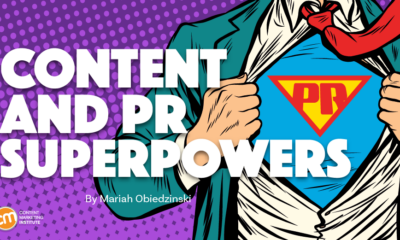SEO
How to Achieve Product-Market Fit (5 Steps)

Startups experience a never-ending stream of problems and challenges. Survival in such a scenario is an art of choosing between what to focus on, put on hold, or simply ignore.
But that is never easy: differences in opinions, time and money running out, and the false notion that a truly great business idea should sky-rocket immediately are common issues that startups will face.
Product-market fit is a concept that aims to solve various startup problems by aspiring to be “the only thing that matters.” Focusing on this concept should put any startup on the right track, no matter the circumstances.
In this article, we’re going to take a closer look at this widely discussed concept. Here’s what we’ll address:
Product-market fit (PMF) is when a business has confirmed signals that its product can satisfy an existing demand in a market with high potential.
The usual sign of achieving PMF is when people are willing to buy the product (even if it’s not perfect yet), actively use it, and recommend it to others.
Building a successful product is a matter of doing the right things in the right order and focusing on what truly matters.
Just as houses need to be built from the ground up, businesses should build good foundations before going any further.
Before hiring more people or scaling customer acquisition, startups should confirm two things: First, there are enough people willing to pay for the product; second, the market itself shows a potential for growth.
Simply put, without PMF, there is no sustainable growth.
There are a few possible scenarios for achieving PMF. Some companies find a good, initial idea that they build upon. Others need to change their business completely (pivot) to become profitable. So let’s look at some examples of businesses finding their PMF.
Ahrefs
Ahrefs is an all-in-one SEO toolkit that comprises multiple tools designed to grow organic search traffic, analyze competition, and tackle technical SEO issues.

Ahrefs’ five core tools.
But in the early days, Ahrefs was just a single tool built for backlink analysis (which is only one aspect of SEO).
Recommended reading: SEO: The Complete Guide for Beginners

Ahrefs’ value proposition in 2011.
Ahrefs’ founding team focused solely on customer satisfaction of the first product. There was no marketing or sales team in the beginning.
That strategy allowed the company to get clear signals of PMF. Consequently, thanks to the organic growth of its customer base, Ahrefs was able to build more successful SEO tools and scale its team.
It’s important to note Ahrefs didn’t stop at the initial PMF. To stay competitive and on top of the market’s demand, it expanded the functionality from a single-purpose SEO tool to a full-blown SEO toolkit.
Slack
Meet Glitch, the progenitor of Slack that wasn’t even a messaging app. Glitch was a browser-based online multiplayer game launched in 2012, and it looked like this:

That chat window on the right is what later became the Slack we all know today. The rest was dropped by the company and released under an open-source license for anyone to take over.
Slack found its PMF by turning into a completely different product. In startup lingo, that is called a “pivot.”
The Glitch game didn’t see the desired success. But in light of its spin-off’s success, that doesn’t matter at all. The important part is to understand your lesson quickly and focus on things that actually work.
Play-Doh
Play-Doh is a classic toy that has been a must-have in any toy store for some 50 years. The brand is hugely successful, but its journey of searching for PMF is a lot less smooth sailing.
First of all, Play-Doh originally had a completely different application for a completely different target audience than today. Going by the name of Kutol, this product was a wall cleaner made especially for washing off the black residue on coal heaters—a common problem in the 1930s.
The business was great until the coal heaters were substituted by “cleaner” gas and oil heaters. That’s how the company lost its original PMF.
But it didn’t give up. Legend has it that one of the founders’ relatives had been using Kutol with children in art and crafts classes. That relative suggested something similar for a new, official product application. So the producers of Kutol took a leap of faith and rebranded the product as Play-Doh, a modeling compound for children.
With that, the company discovered its new PMF and has held on to it ever since.

Before and after. In the 1950s, the wall cleaner ‘Kutol’ tried to regain its PMF. In doing so, it became a successful toy.
The underlying idea behind the process of finding PMF is similar to the scientific method. To make a discovery (i.e., what product to build), you need to research the problem well enough to propose a hypothesis and then design an experiment that will prove or disprove the hypothesis.
If you want to learn about measuring PMF for an already existing product, jump to step four.
Step 1. Formulate the value hypothesis
A value hypothesis is an assumption explaining why a customer is likely to buy your product. In other words, you need to specify what value your product would introduce to the user’s life.
A value hypothesis may look something like this:
- Buying books online provides a better experience than buying books in physical stores.
- SEO professionals need a tool for automated technical SEO diagnosis.
- Email communication is less productive than real-time online chatting.
Your value hypothesis will later be tested in confrontation with real users interacting with your minimum viable product (MVP).
Great products solve real, meaningful problems. To identify those problems and the potential customers in need of a solution, you need to perform market research.
Market research can be a really time-consuming process. But the good news is that a good portion of market research can be done online without breaking the bank.
For example, by using an SEO tool like Ahrefs, you can gauge market demand by looking for signs of search demand in search engines, as they are often correlated.
Let’s say your startup wants to offer an online solution for delayed and canceled flight compensation. Since this will be an online product, you’ll want to see how often people search for queries related to that problem. With Ahrefs’ Keywords Explorer, that information is only a few clicks away.

‘Flight delay compensation’ gets around 1.6K searches per month globally and seems like a common problem. Also, we can see the search demand was heavily impacted by the pandemic.
Step 2. Specify the features of your minimum viable product
Once you’ve clearly defined the problem you want to solve, the next step is identifying the set of features that will solve the customer’s problem.
Building too few features will result in an incomplete solution. But having too many features is not good as well, as this can dilute the core value of the product and increase the risk of overspending on your prototype.
This is where an MVP comes in. Building an MVP is about the balance of the right kind and the right number of features needed to verify the hypothesis.
It’s probably a good idea to use multiple sources and types of research to discover what needs to be built. You can combine conclusions from your competitive analysis, surveys, observations, and industry reports.
Also, SEO tools can come in handy. For example, you can get a pretty good idea of which features are generating the most value for your competitors by identifying webpages that they drive paid traffic to and top pages by organic search traffic.
Suppose you want to build a project management tool. Let’s use Ahrefs’ Site Explorer and look at the Paid pages report for asana.com:

And let’s see the landing pages for product features that get the most organic traffic in the Top pages report:

You can infer that building forms and timeline features into your project management app is something to seriously consider. If it’s good for your competitor, it could be good for your product as well (on top of your unique value proposition).
Step 3. Build your minimum viable product
If you look at some of the most successful MVPs, you will see there are many ways to build them. They don’t even have to be fully functional products.
To illustrate, Buffer started as a landing page that collected sign-ups for a product that did not exist yet.

Dropbox validated its business idea by creating two videos about the product. The first video didn’t even show the product.
https://www.youtube.com/watch?v=w4eTR7tci6A
Now, let’s look at a few ideas on how you can build an MVP (besides developing a fully functional product):
- Ad campaigns – You can produce various types of creative content for specific audiences to see which aspects of your product appeal to them the most.
- Prototypes – You can use design tools like UXPin, Figma, or Marvel to create an interactive, high-fidelity prototype of your solution and show it to people.
- Landing pages – Similar to how Buffer started, you can create a landing page to pitch your idea and collect email addresses through a waiting list sign-up form. Later on, you can use those emails to gather feedback. Also, you can run A/B tests on the site to test different hypotheses.
- Customer interviews – This method allows you to dive deeper into how your prospects would react to your product with the least possible effort.
- “Wizard of Oz” MVP – Customers think they are experiencing a real product, but you deliver the service through manual work that’s “behind the scenes.”
- Concierge MVP – A manual-first MVP similar to the “Wizard of Oz,” but you don’t fake the product.
- Kickstarter/pre-order pages – You can test market demand by getting early birds of your product to sign up.
However you choose to build your MVP, remember that it needs to help verify your value hypothesis.
Step 4. Test your minimum viable product with real users
In this stage of finding PMF, you need to gather as much feedback for your product as you can. Don’t stop at positive or negative feedback. Try to dig deeper and understand what your users like or dislike and what they want to change.
Platforms like SurveyMonkey, UserTesting, or Remesh can help you reach the right demographics to conduct user testing and/or interviews.
You can also post your MVP to online communities relevant to your product’s target audience or share it on platforms like Product Hunt.
For products existing on the market, depending on how long your product has been around, signs of PMF (or the lack of it) can be seen in customer satisfaction and engagement. Consider these indicators:
- NPS score – Run a Net Promoter Score survey among your users. If your users are not satisfied with the product, it’s unlikely they will recommend it to their friends. Hence, you have a low chance of growing organically via word of mouth.
- The 40% rule – Like the NPS survey, this is about just one question: “How would you feel if you could no longer use [product]?” The possible answers are a) very disappointed, b) somewhat disappointed, c) not disappointed (it isn’t really that useful), and d) N/A—I no longer use [product]. If at least 40% of your users choose the first option, there is a great chance you’ve achieved PMF.
- Cohort retention rate – This is reserved only for products designed to be used over a longer period of time. The idea is this: If your paid customers stay with your product, that’s a sign of PMF. The ideal retention rate can vary, depending on the type of product and industry. Read more about retention rate benchmarks here.
Step 5. Learn from your users and iterate
At this final stage of the process, you should be able to answer two questions: Did your MVP prove or disprove the value hypothesis? And what can you do to make your future product better?
A negative result of your value hypothesis experiment is not the end of the world. Depending on the feedback, you may make some tweaks and restate your hypothesis. Then, start the process all over again.
One famous example of that is bubble wrap. It didn’t catch on as a new type of wallpaper or house insulation.

Also, some business ideas can just be ahead of their time (e.g., due to technical reasons or current legislation). You may need to try again some other time.
However, some business ideas are just bad, and there’s really nothing you can do about it. On the bright side, if you discover this issue early, you’ll save yourself a great deal of time and money.
But if you are right all along and your MVP survives the confrontation with users, then you’ll have a good chance of succeeding. In other words, it’s likely you found PMF.
Before you turn your MVP into a fully functional product and deliver it to the market, it’s a good idea to make a couple more iterations to tackle all of the feedback you’ve received. What you want to hear from your users is your MVP is easy to use and provides a valuable solution.
Finally, as we’ve seen with our PMF examples, PMF can be a temporary thing. You may lose at some point, like Kutol (Play-Doh), or may need to expand on your initial idea like Ahrefs.
Final thoughts
The market always wins. A great product will fail in an unfavorable market, and a bad product will sooner or later be marginalized in a thriving market.
That’s why choosing a market where users have a real, meaningful problem, launching the product quickly, and iterating it based on the feedback matter so much. Succeeding at that stage is a sign you can start working on the next steps: hiring more people and acquiring more customers.
On a final note, it’s good to keep in mind that not all user feedback is created equal. You don’t need to make all of your users’ wishes come true. Focus on doable improvements and things that go along with your product vision.
Got questions or comments? Ping me on Twitter.
SEO
Google Declares It The “Gemini Era” As Revenue Grows 15%

Alphabet Inc., Google’s parent company, announced its first quarter 2024 financial results today.
While Google reported double-digit growth in key revenue areas, the focus was on its AI developments, dubbed the “Gemini era” by CEO Sundar Pichai.
The Numbers: 15% Revenue Growth, Operating Margins Expand
Alphabet reported Q1 revenues of $80.5 billion, a 15% increase year-over-year, exceeding Wall Street’s projections.
Net income was $23.7 billion, with diluted earnings per share of $1.89. Operating margins expanded to 32%, up from 25% in the prior year.
Ruth Porat, Alphabet’s President and CFO, stated:
“Our strong financial results reflect revenue strength across the company and ongoing efforts to durably reengineer our cost base.”
Google’s core advertising units, such as Search and YouTube, drove growth. Google advertising revenues hit $61.7 billion for the quarter.
The Cloud division also maintained momentum, with revenues of $9.6 billion, up 28% year-over-year.
Pichai highlighted that YouTube and Cloud are expected to exit 2024 at a combined $100 billion annual revenue run rate.
Generative AI Integration in Search
Google experimented with AI-powered features in Search Labs before recently introducing AI overviews into the main search results page.
Regarding the gradual rollout, Pichai states:
“We are being measured in how we do this, focusing on areas where gen AI can improve the Search experience, while also prioritizing traffic to websites and merchants.”
Pichai reports that Google’s generative AI features have answered over a billion queries already:
“We’ve already served billions of queries with our generative AI features. It’s enabling people to access new information, to ask questions in new ways, and to ask more complex questions.”
Google reports increased Search usage and user satisfaction among those interacting with the new AI overview results.
The company also highlighted its “Circle to Search” feature on Android, which allows users to circle objects on their screen or in videos to get instant AI-powered answers via Google Lens.
Reorganizing For The “Gemini Era”
As part of the AI roadmap, Alphabet is consolidating all teams building AI models under the Google DeepMind umbrella.
Pichai revealed that, through hardware and software improvements, the company has reduced machine costs associated with its generative AI search results by 80% over the past year.
He states:
“Our data centers are some of the most high-performing, secure, reliable and efficient in the world. We’ve developed new AI models and algorithms that are more than one hundred times more efficient than they were 18 months ago.
How Will Google Make Money With AI?
Alphabet sees opportunities to monetize AI through its advertising products, Cloud offerings, and subscription services.
Google is integrating Gemini into ad products like Performance Max. The company’s Cloud division is bringing “the best of Google AI” to enterprise customers worldwide.
Google One, the company’s subscription service, surpassed 100 million paid subscribers in Q1 and introduced a new premium plan featuring advanced generative AI capabilities powered by Gemini models.
Future Outlook
Pichai outlined six key advantages positioning Alphabet to lead the “next wave of AI innovation”:
- Research leadership in AI breakthroughs like the multimodal Gemini model
- Robust AI infrastructure and custom TPU chips
- Integrating generative AI into Search to enhance the user experience
- A global product footprint reaching billions
- Streamlined teams and improved execution velocity
- Multiple revenue streams to monetize AI through advertising and cloud
With upcoming events like Google I/O and Google Marketing Live, the company is expected to share further updates on its AI initiatives and product roadmap.
Featured Image: Sergei Elagin/Shutterstock
SEO
brightonSEO Live Blog

Hello everyone. It’s April again, so I’m back in Brighton for another two days of Being the introvert I am, my idea of fun isn’t hanging around our booth all day explaining we’ve run out of t-shirts (seriously, you need to be fast if you want swag!). So I decided to do something useful and live-blog the event instead.
Follow below for talk takeaways and (very) mildly humorous commentary. sun, sea, and SEO!
SEO
Google Further Postpones Third-Party Cookie Deprecation In Chrome

Google has again delayed its plan to phase out third-party cookies in the Chrome web browser. The latest postponement comes after ongoing challenges in reconciling feedback from industry stakeholders and regulators.
The announcement was made in Google and the UK’s Competition and Markets Authority (CMA) joint quarterly report on the Privacy Sandbox initiative, scheduled for release on April 26.
Chrome’s Third-Party Cookie Phaseout Pushed To 2025
Google states it “will not complete third-party cookie deprecation during the second half of Q4” this year as planned.
Instead, the tech giant aims to begin deprecating third-party cookies in Chrome “starting early next year,” assuming an agreement can be reached with the CMA and the UK’s Information Commissioner’s Office (ICO).
The statement reads:
“We recognize that there are ongoing challenges related to reconciling divergent feedback from the industry, regulators and developers, and will continue to engage closely with the entire ecosystem. It’s also critical that the CMA has sufficient time to review all evidence, including results from industry tests, which the CMA has asked market participants to provide by the end of June.”
Continued Engagement With Regulators
Google reiterated its commitment to “engaging closely with the CMA and ICO” throughout the process and hopes to conclude discussions this year.
This marks the third delay to Google’s plan to deprecate third-party cookies, initially aiming for a Q3 2023 phaseout before pushing it back to late 2024.
The postponements reflect the challenges in transitioning away from cross-site user tracking while balancing privacy and advertiser interests.
Transition Period & Impact
In January, Chrome began restricting third-party cookie access for 1% of users globally. This percentage was expected to gradually increase until 100% of users were covered by Q3 2024.
However, the latest delay gives websites and services more time to migrate away from third-party cookie dependencies through Google’s limited “deprecation trials” program.
The trials offer temporary cookie access extensions until December 27, 2024, for non-advertising use cases that can demonstrate direct user impact and functional breakage.
While easing the transition, the trials have strict eligibility rules. Advertising-related services are ineligible, and origins matching known ad-related domains are rejected.
Google states the program aims to address functional issues rather than relieve general data collection inconveniences.
Publisher & Advertiser Implications
The repeated delays highlight the potential disruption for digital publishers and advertisers relying on third-party cookie tracking.
Industry groups have raised concerns that restricting cross-site tracking could push websites toward more opaque privacy-invasive practices.
However, privacy advocates view the phaseout as crucial in preventing covert user profiling across the web.
With the latest postponement, all parties have more time to prepare for the eventual loss of third-party cookies and adopt Google’s proposed Privacy Sandbox APIs as replacements.
Featured Image: Novikov Aleksey/Shutterstock
-

 PPC7 days ago
PPC7 days ago19 Best SEO Tools in 2024 (For Every Use Case)
-
SEARCHENGINES6 days ago
Daily Search Forum Recap: April 19, 2024
-
SEARCHENGINES7 days ago
Daily Search Forum Recap: April 18, 2024
-

 WORDPRESS6 days ago
WORDPRESS6 days agoHow to Make $5000 of Passive Income Every Month in WordPress
-

 WORDPRESS5 days ago
WORDPRESS5 days ago13 Best HubSpot Alternatives for 2024 (Free + Paid)
-

 SEO7 days ago
SEO7 days ago25 WordPress Alternatives Best For SEO
-

 WORDPRESS6 days ago
WORDPRESS6 days ago7 Best WooCommerce Points and Rewards Plugins (Free & Paid)
-

 MARKETING6 days ago
MARKETING6 days agoBattling for Attention in the 2024 Election Year Media Frenzy










![Navigating Google’s Third-Party Cookie Purge [Next Steps for Advertisers] Navigating Google’s Third-Party Cookie Purge [Next Steps for Advertisers]](https://articles.entireweb.com/wp-content/uploads/2024/02/Navigating-Googles-Third-Party-Cookie-Purge-Next-Steps-for-Advertisers-400x240.jpg)
![Navigating Google’s Third-Party Cookie Purge [Next Steps for Advertisers] Navigating Google’s Third-Party Cookie Purge [Next Steps for Advertisers]](https://articles.entireweb.com/wp-content/uploads/2024/02/Navigating-Googles-Third-Party-Cookie-Purge-Next-Steps-for-Advertisers-80x80.jpg)




You must be logged in to post a comment Login